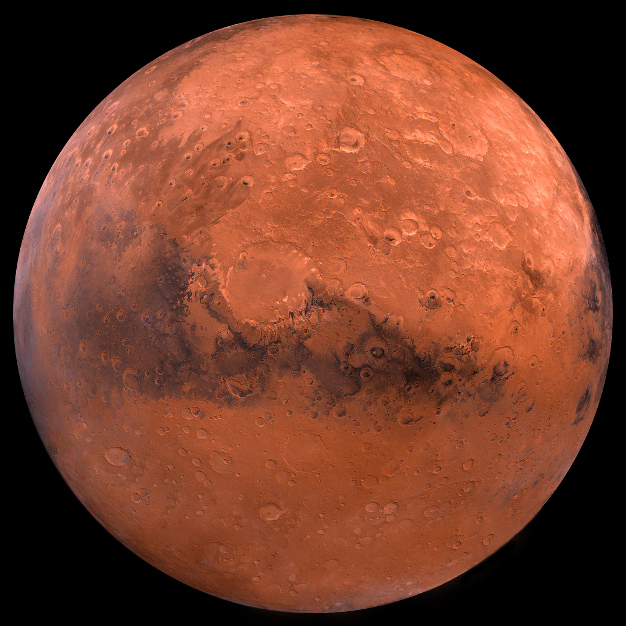
Science stands still for no one, and with a new year comes a new calendar of exciting events in spaceflight and exploration. New Atlas rounds up some of the most important milestones to look forward to in 2020.
Solar Orbiter
The first major event on the cosmic calendar is the launch of the Solar Orbiter on February 6. Developed by ESA and co-operated by NASA, this satellite will be heading for the Sun, joining the Parker Solar Probe. There it will be studying our parent star up-close, to help answer questions about how the Sun generates solar winds and a magnetic field, and examine the polar regions, which we don’t have a clear view of from Earth.
Crew Dragon
The private space race is heating up this year, with SpaceX due to finally send astronauts to the International Space Station. Set to launch in March or April, the Crew Dragon Demo-2 will be the company’s first crewed test flight, carrying NASA astronauts Douglas Hurley and Robert Behnken to the ISS on a 14-day round trip.
This launch was originally scheduled for mid-2019, but was delayed after an earlier static fire test went wrong, ending in the explosion of the (thankfully unmanned) capsule. Things now seem to be back on track – on January 19 SpaceX successfully demonstrated an in-flight abort test, the final check needed before actual humans blast off.
Mars 2020
On July 17th, NASA’s Mars 2020 mission is slated to finally take off for the Red Planet, before touching down in Jezero crater on February 18, 2021. Once there, it will search for signs of ancient microbial life.
The yet-to-be-named rover takes into account a lot of lessons learnt from Curiosity – it’s made of many parts that have already been tested and shown to work, while improving a few things that went wrong previously, such as the durability of the wheels.
The Mars 2020 rover will also collect and store samples of Martian soil that a future mission may one day bring back to Earth for study. Oh, and it’s also packing a helicopter drone that will scout the Red Planet from the air.
ExoMars
Just nine days after NASA’s Mars 2020 mission blasts off, it will be followed by the joint European and Russian mission, ExoMars 2020. This project features a similar rover with a similar goal – searching for signs of ancient life on the Red Planet.
ExoMars will focus its attention on and under the ground, drilling as deep as 2 m (6.6 ft) to look for these clues. The science team hopes that the rover will find well-preserved organic material at those depths, the mineral and chemical makeup of which will be studied in ExoMars’ built-in lab.
OSIRIS-REx
In August, a delicate dance millions of miles away will reach its crescendo. The spacecraft OSIRIS-REx is currently in orbit around asteroid Bennu, carefully observing the surface and conducting rehearsals for an important meeting.
Sometime that month, the craft will touch down on the rock for just five seconds, blast nitrogen gas to kick up a small cloud of dust that will be captured, and then propel itself away from Bennu once again. A quick weight test will check whether a large enough sample was secured, and if not, it may perform the maneuver up to two more times.
Once it has enough asteroid dust, OSIRIS-REx will then retreat to a safe distance and finally leave Bennu in March 2021. It should arrive back on Earth, sample in tow, in September 2023.
Sentinel 6
In November 2020, ESA will launch the first of two identical SENTINEL-6 satellites into orbit, with an eye towards Earth. These will carry the torch for the ongoing JASON mission, which monitors and maps the world’s oceans.
Using an array of instruments like a radar altimeter, microwave radiometer, star trackers and a Laser Retroreflector Array, SENTINEL-6 will track sea level rise, monitor ocean climates, and make short- to mid-term weather forecasts.
Chang’e 5
Delayed from its original scheduled launch in 2017, the China National Space Administration (CNSA) craft Chang’e-5 will now launch in December 2020. Like its predecessors, this spacecraft is headed for the Moon, but with one major difference – it will be a return trip.
After it arrives in lunar orbit Chang’e-5 will split in two, with one half orbiting the Moon while the other descends to the surface. The lander module will drill into the lunar regolith, collecting up to 2 kg (4.4 lb) of moondust from as deep as 2 m (6.6 ft) below the surface. When it’s done, part of the craft will blast off and rendezvous with the other modules in orbit, which will then return the samples to Earth for the first time since 1976.
Hayabusa2
OSIRIS-REx isn’t the only spacecraft to have a close encounter with an asteroid – Japan’s Hayabusa2 did so back in 2018, and it’s due to return to Earth by the end of 2020.
The craft, from the Japan Aerospace Exploration Agency (JAXA), was launched in 2014, and rendezvoused with asteroid Ryugu in June 2018, where it also gathered samples. Instead of using nitrogen gas like OSIRIS-REx, Hayabusa2 fired a metal slug into the surface to kick up dust for collection. It even dropped off a pair of small, hopping robots to explore Ryugu.
And now the mission is almost over. Hayabusa2 departed the space rock in November 2019, and is due to land in outback Australia in December 2020, providing scientists with new samples of pristine asteroid material for study.
